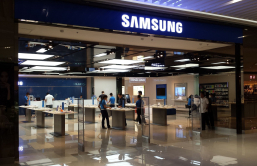
(Photo : Trump vs Harris)
Trump vs Harris
- Kamala Harris leads Donald Trump by 47% to 40% in the U.S. presidential race, according to a Reuters/Ipsos poll.
- The poll shows Harris has blunted Trump's edge on the economy and jobs.
- In seven battleground states, polls show Harris and Trump in a close race.
- Both candidates are focusing their campaigns on the economy, the top issue for voters.
The U.S. presidential race is witnessing a significant shift. Democratic Vice President Kamala Harris is leading over Republican Donald Trump by 47% to 40%, according to a recent Reuters/Ipsos poll. This development comes as Harris appears to have blunted Trump's edge on the economy and jobs.
The poll, conducted over three days and closed on Monday, showed Harris with a six-percentage point lead based on unrounded figures. This translates to 46.61% of registered voters supporting Harris, while Trump was backed by 40.48%.
This lead is slightly higher than Harris's five-point advantage over Trump in a Reuters/Ipsos poll conducted on September 11-12. However, it's important to note that the latest poll has a margin of error of about four percentage points.
While national surveys like the Reuters/Ipsos poll provide crucial insights into the electorate's views, the state-by-state results of the Electoral College are what ultimately determine the winner.
Battleground States and Economic Policies
Seven battleground states are likely to be decisive in this regard. In these battleground states, polls have shown Harris and Trump in a neck-and-neck race, with many results within the polls' margins of error. A recent New York Times/Siena College poll showed Trump with marginal leads in three of these states - Arizona, Georgia, and North Carolina.
When asked which candidate had the better approach on the economy, unemployment, and jobs, 43% of voters responding to the latest Reuters/Ipsos poll picked Trump, and 41% selected Harris.
This two-point advantage for Trump on the topic is a decrease from his three-point lead in an August Reuters/Ipsos poll and an 11 point lead over Harris in late July, shortly after she launched her campaign.
Campaign Focus and Voter Preferences
Harris entered the race after President Joe Biden folded his reelection effort following a poor debate performance against Trump in June. At the time, Trump was widely seen as the frontrunner, partly based on his perceived strength on the economy after several years of high inflation under the Biden administration.
Between April and June, Reuters/Ipsos polling showed voters picked Trump over Biden on the economy, unemployment, and jobs by between five and eight points. However, Trump still had wide leads in some measures of confidence in his economic stewardship.
A Reuters/Ipsos poll from August asked voters which candidate had a better approach on the the U.S. economy - without specific reference to jobs or unemployment - and Trump led Harris by 11 points, 45% to 36%.
Both candidates are focusing their campaign pledges on the economy, which the latest Reuters/Ipsos poll showed was the No. 1 issue for voters. Trump said he would create special manufacturing zones on federal lands and promised to raise tariffs on imported goods.
On the other hand, Harris has pledged tax breaks for families with children and higher taxes for corporations. She is expected to unveil new economic proposals this week, even though some advisers acknowledge time is running out to convince voters with pitches on policy.
The polling average maintained by FiveThirtyEight.com shows a close race at the national level, with Harris leading Trump 48.3% to 45.8%. The latest Reuters/Ipsos poll surveyed 1,029 U.S. adults online, nationwide, including 871 registered voters.
Among these, 785 were considered the most likely to turn out on Election Day. Among these likely voters, Harris led 50% to 44%, though similar to her lead among all registered voters, her advantage was only five points when using unrounded figures.
As the election day approaches, it remains to be seen how these poll numbers will translate into actual votes. The focus of both campaigns on the economy reflects the importance of this issue to voters.
This election race is reminiscent of the 2008 U.S. presidential election, where then-Senator Barack Obama faced off against Senator John McCain. Like Harris, Obama was a relatively new face in the political arena but managed to secure a lead in the polls and eventually win the presidency. The 2008 election was also marked by a focus on economic issues, much like the current race between Harris and Trump.









